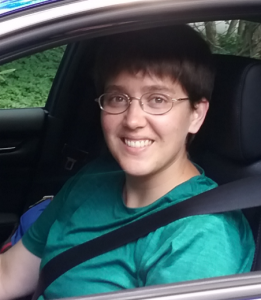Artificial Photonic Materials in Circuit QED
Alicia Kollár (Department on Physics and JQI, University of Maryland)
WATCH THE RECORDED LECTURE HERE:
ABSTRACT:
After two decades of development, superconducting circuits have emerged as a rich platform for quantum computation and simulation. Here I will describe some of the techniques that have emerged for building synthetic photonic materials from these quantum circuits with a focus on 2D waveguide resonators. I will highlight some of the unique capabilities of these systems, including the ability to realize lattices that exist an an effective curved space with negative, hyperbolic, curvature, as well as the ability to realize lattices with gapped flat bands.
RECOMMENDED PAPERS:
https://www.nature.com/articles/s41567-020-0815-y
BIO:
 Alicia Kollár received her B.A. in Physics from Princeton University in 2010 and her Ph.D. from Stanford University in 2016. In her doctoral studies with Benjamin Lev, she worked on the design and construction of a multimode cavity-BEC apparatus to study superradiant self-organization. She was awarded a Princeton Materials Science Postdoctoral Fellowship in 2017 to work with Andrew Houck on quantum simulation of solid-state physics using circuit QED lattices. Her research focuses on using novel coplanar waveguide lattice techniques and graph theory to design and realize microwave photonic crystals with unusual structures such as gapped flat bands and spatial curvature. She combines these structures with multimode/waveguide circuit QED to engineer quantum simulators of lattice and spin models.
Alicia Kollár received her B.A. in Physics from Princeton University in 2010 and her Ph.D. from Stanford University in 2016. In her doctoral studies with Benjamin Lev, she worked on the design and construction of a multimode cavity-BEC apparatus to study superradiant self-organization. She was awarded a Princeton Materials Science Postdoctoral Fellowship in 2017 to work with Andrew Houck on quantum simulation of solid-state physics using circuit QED lattices. Her research focuses on using novel coplanar waveguide lattice techniques and graph theory to design and realize microwave photonic crystals with unusual structures such as gapped flat bands and spatial curvature. She combines these structures with multimode/waveguide circuit QED to engineer quantum simulators of lattice and spin models.
